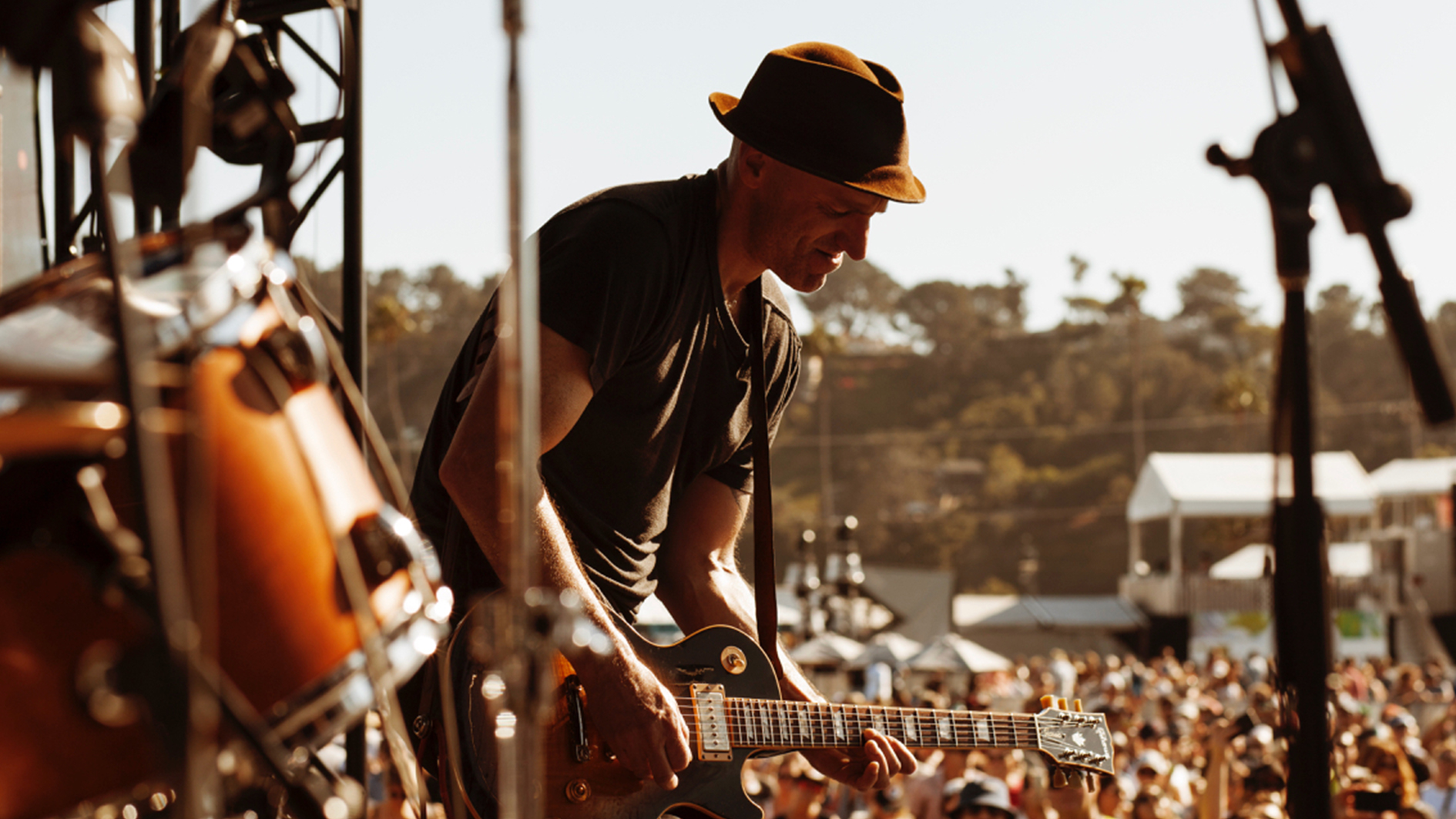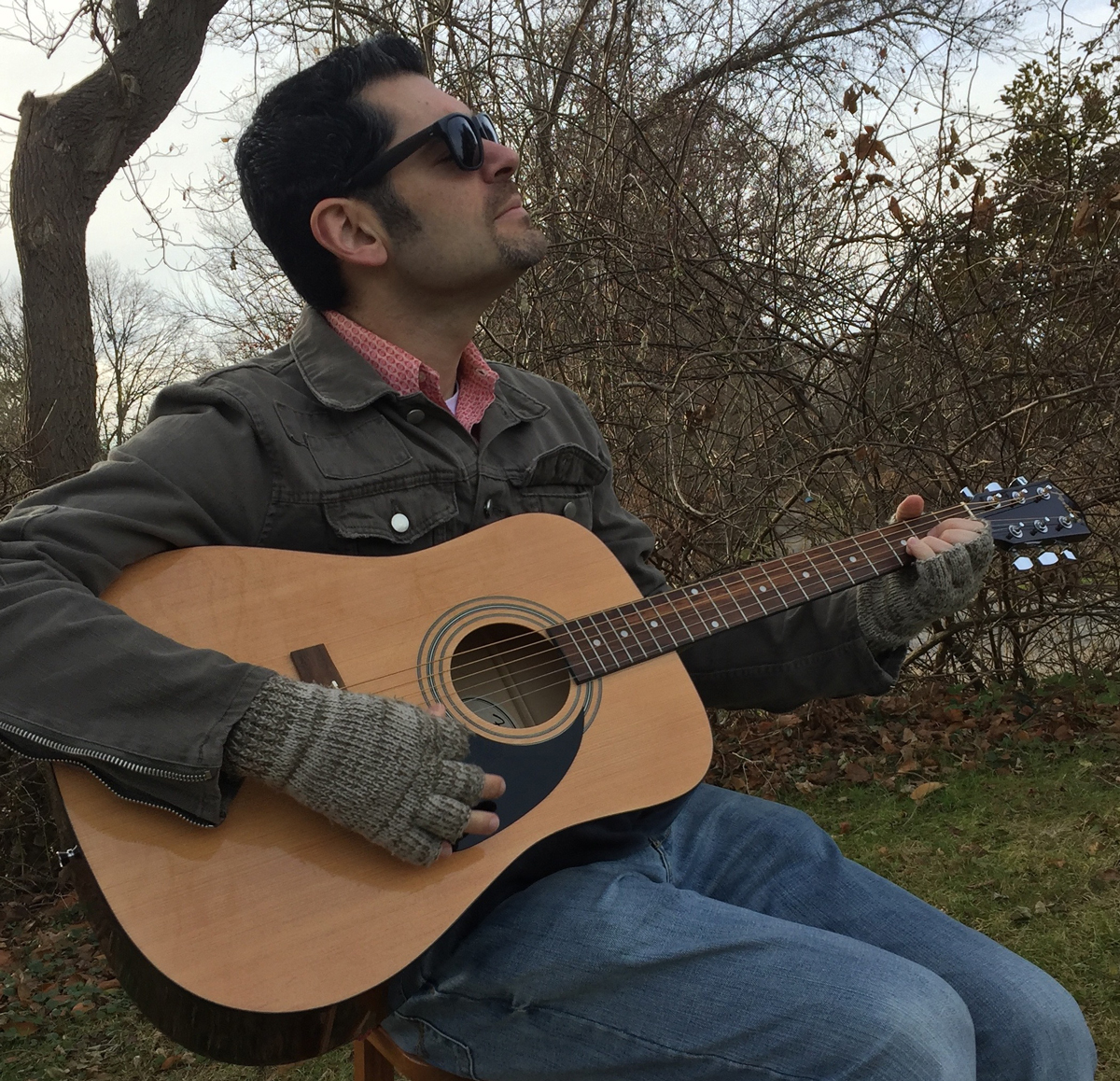Blind Melon: “We're releasing 10-12 singles instead of an album all at once – we'd rather remind people we exist every couple of months than every 2 years”
Guitarists Rogers Stevens and Christopher Thorn discuss the challenges of completing music during a pandemic
![[L-R] Roger Stevens and Christopher Thorn of Blind Melon](https://cdn.mos.cms.futurecdn.net/Nm2qRKxMcQLzkmpEDdhKK4.jpg)
First rising to prominence on the strength of two now-classic ‘90s rock albums, Blind Melon (1992) and Soup (1995), Blind Melon seemed destined for greatness…until singer Shannon Hoon tragically died shortly after the release of their sophomore effort.
After odds and ends collection, Nico (1996), and an extended hiatus, the surviving members regrouped in 2006 with singer Travis Warren, releasing For My Friends in 2008, and touring the world ever since.
Instead of waiting for an entire album’s worth of material to be completed for studio full-length #4, Blind Melon have opted to sporadically release songs over the past two years – with the end goal being that they will all eventually be compiled for a full-length LP. Which has proven tricky in these Covid times.
When Guitar World spoke to Roger Stevens and Christopher Thorn shortly after the dawn of 2021, the guitar duo discussed the new music and their tools of the trade.
Rather than releasing a full album, Blind Melon has been issuing songs. What was the thinking behind that?
Stevens: “I think the concept of an album, maybe it’s not necessary in the same way. Because it used to be that the record company would put an album out, and over the course of the next two years, they would selectively present you with one of the tracks you already heard. But now, the distribution model has completely changed.
“We’re going to release singles every couple of months, and then when there are 10-12 of them, we’re going to press vinyl and sell it to whoever wants it. But what else is there to do?
Get The Pick Newsletter
All the latest guitar news, interviews, lessons, reviews, deals and more, direct to your inbox!
“And my thinking is you’re better off reminding people you still exist every couple of months than reminding them once every two years with a media blitz and they get sick of you, and then it goes away. It’s consistency…and punctuality…virtue!”
Thorn: “We were getting ready to finish the record literally about a week before we got shut down in LA. The guys were planning on coming out – at the beginning of Covid.
You’re better off reminding people you still exist every couple of months than reminding them once every two years with a media blitz and they get sick of you
Roger Stevens
“So now we’re doing everything remotely. Which is fine, I do plenty of records that way [Thorn is also a producer] – but it’s a different thing compared to all being in the same room together and jamming.
“Guitar-wise, the song Fence, the way it’s been working because of Covid is Travis will just cut the song with a vocal and his acoustic to a click track, send it to me, I’ll put some guitar on it, send it to Glen [Graham, drummer]…we send it around to everyone to play on. So that’s how the songs have been getting worked up.”
But all the songs eventually wind up at Christopher’s studio, Fireside Sound, right?
Thorn: “Most of the stuff is getting finished in my studio. Everybody in the band has a studio where they can record. But in the end, everything comes back to me and I finish it here and do the mixes from Fireside Sound, out there in Joshua Tree. Which is where we started the record a few years ago – the guys came out and that’s where we first wrote Too Many to Count, and a song Rogers wrote called Matter to You.”
What were your main guitars and amps for the recordings?
Stevens: “My #1 baby is a 2008 Les Paul Classic. I like them lighter. People don’t like these chamber bodies that they did. But I do! I put Lindy Fralin PAF pickups in it and I put a Callaham bridge on it – and that thing is a difference maker.
“Honestly, I put them on all of my electric guitars now. I like guitars to be really light and resonant. If I pick up a guitar and I don’t hear overtones and feel the vibration in it – then I’m not really that interested in it.
“Do you know this company, 3 Monkeys Amps? It’s a boutique manufacturer. It’s my friend, Ossie Ahsen, and his partners are Brad Whitford from Aerosmith and his tech, Greg Howard.
“Ossie had a company called Blockhead, and I bought several amps from him, because he knows what he’s doing. He made a replica of the Van Halen amp from the early part of Van Halen’s career, and he made a replica of the first Marshall, which was a 2x12 combo amp.
My main guitar riffs – 90% of the time – come from an 8-inch Supro and my Telecaster
“It was nicknamed ‘The Bluesbreaker’, because it was used allegedly by Clapton on the first John Mayall & the Bluesbreakers record. So then, he went and formed this company with Brad and Greg, 3 Monkeys. They have sort of classic designs, but with cool, interesting innovations.
“I’m looking at four of those right now – and they’re all completely different. I have the Orangutan, the Nashville Howler, a custom that’s a clone of a 100-watt Marshall, and another one that is sort of like the Orangutan but it’s a one-off. Those are the amps on all of these songs, except there is a Victoria Bassman on some parts.”
Thorn: “Still to this day, it’s my ‘70s Tele Customs – and I have a couple of them. Although I needed a whammy bar, so I used my Strat for the song Way Down and Far Below.
“But I’ve been sticking with my same sort of stuff – I’m still a Tele guy, mostly through a Supro. I use a lot of small amps in the studio. I prefer the sound, and most of my distortion never comes from a guitar pedal – it comes from the amp. So, I use these small amps that I can overdrive.
“There’s another song called Too Many to Count that was written years ago in Mexico, and that’s once again, my Tele through a Supro. I’ll use different things if I’m trying to carve out one little melodic idea.
“But my main guitar riffs – 90% of the time – comes from an eight-inch Supro and my Telecaster. I have a 1954 Martin. I was in the midst of writing another song, I took a 10-minute break, sat on the couch, and In the Very Best Way came out and was finished – without exaggeration – within 15 or 20 minutes.”
Christopher, I take it that you prefer vintage instruments over new.
Thorn: “Everything I have is vintage, honestly. I’m lucky enough that I bought all my old vintage guitars in the early ‘90s, when they were affordable. And I know they make great new things – I don’t discount what they’re making now as being great.
“I just personally have an attraction to a guitar that already has a history and already had a few songs squeezed out of it. As long as I know that guitar still has a few more songs in it, I love buying used instruments. They have some sort of power about them that I love.”
How do you decide who plays what, guitar-wise?
Stevens: “To be honest, it’s never really ever discussed all that much. But it did change a little before and during the pandemic, when we were trying to finish songs remotely rather than being in the room.
Nathan Towne's playing bass with us, but he’s definitely the best guitar player in the band. We don’t let him play too much guitar, because we want to make sure we keep our jobs!
“If we were in the room with guitars, amps, and the band was playing, I don’t think we’d talk about it all that much, other than, ‘OK, you did that great,’ and that would be it. The communication is tricky like this.”
The new material also is the first to feature the band’s new bassist, Nathan Towne.
Thorn: “He really is the best musician in the band. He’s playing bass with us, but he’s definitely the best guitar player in the band – even though we don’t let him play too much guitar, because Rogers and I want to make sure we keep our jobs! But he really is just an exceptional musician. He couldn’t have fit into our vibe any better.
“He was an old friend of Travis, so when we started working with Nathan, it immediately felt natural and incredible. His contributions are amazing – he really has the sense of music and harmony.”
Are there any similarities between Travis and Shannon?
Stevens: “I’ve had great experiences with Travis – and the same with Shannon, I had this same exact experience – where I would have an entire piece of music arranged in a way that made sense to me, but I wouldn’t have any lyrics.
“So, on the record we did in 2008, the title track, For My Friends, I made that in my house. I sent that to him at midnight one night, and went to bed. The next morning, it was back to me – the whole vocal was written! It was done. That also happened with Hypnotized and Cheetum Street.”

“With Shannon, we had more time in a room. We actually got in a room and played, rehearsed, and fucked around a lot more. And that’s hard for singers. And both Travis and Shannon complained about this – the band gets in there and fucks around with a riff for six hours, and you’re the singer, but you can’t really just sing over it. So, you get bored.”
So the plan is to compile all the songs and release a full-length later this year?
Thorn: “I hope so. I’m not sure just because of the timing of everything. But we’re staying the course and we have a bunch of songs. We’re knocking them away, finishing them up. We’ve got to get a record out this year. For sure.”
Greg is a contributing writer at Guitar World. He has written for other outlets over the years, and has been lucky to interview some of his favorite all-time guitarists and bassists: Tony Iommi, Ace Frehley, Adrian Belew, Andy Summers, East Bay Ray, Billy Corgan, Alex Lifeson, Geddy Lee, Les Claypool, and Mike Watt, among others (and even took lessons from John Petrucci back in the summer of ’91!). He is the author of such books as Grunge Is Dead: The Oral History of Seattle Rock Music, Shredders: The Oral History of Speed Guitar (And More) and Touched by Magic: The Tommy Bolin Story.
“His songs are timeless, you can’t tell if they were written in the 1400s or now”: Michael Hurley, guitarist and singer/songwriter known as the ‘Godfather of freak folk,’ dies at 83
“The future is pretty bright”: Norman's Rare Guitars has unearthed another future blues great – and the 15-year-old guitar star has already jammed with Michael Lemmo











